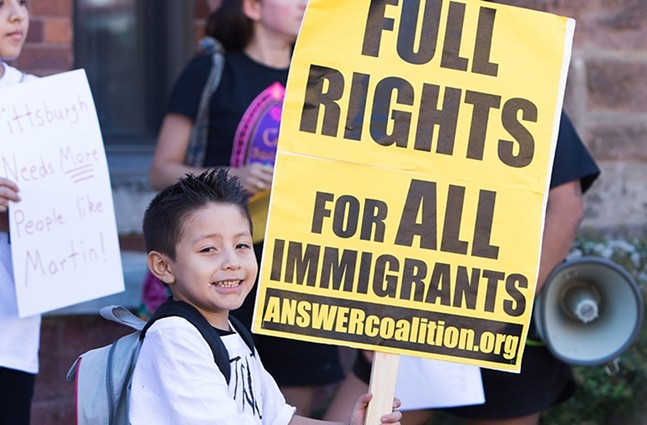Of metropolitan areas containing more than a million people, only three have fewer undocumented immigrants than Pittsburgh.
According to Pew Research Center, only 0.7 percent of the Pittsburgh’s region population is estimated to be comprised of undocumented immigrants. The only large U.S. metros with a smaller percentages are Cleveland, Rochester, NY, and Buffalo, and only by fractions of a percent.
Of Pittsburgh foreign-born residents, 17 percent are estimated to be undocumented, which is below the U.S. average of 24 percent. Pew estimates that from 2007 to 2016, the Pittsburgh region added 5,000 undocumented immigrants, though the margin of error was +/- 5,000, so the change was considered “not significant.”
Pittsburgh is estimated to contain 15,000 undocumented immigrants, which is the same as Cleveland, but more than Rochester (5,000) and Buffalo (<5,000). The Pittsburgh Metro area contains more than 2.2 million people.
Looking at the Pennsylvania metro areas included in the study, Pew estimates that from 2007 to 2017 the commonwealth added less than 40,000 undocumented immigrant. But again, the combined margin of error adds up to about +/- 40,000 so the estimations were deemed “not significant.”
Pew estimated undocumented immigrant populations in 182 metropolitan areas by analyzing census data. The research center utilized margins of error “as a rough guide to the possible range of the estimates.”
In the U.S. overall, Pew estimates that the country has about 1.5 million fewer undocumented immigrants than it had in 2007, with a margin of error of +/-. In 2016, there were 10.7 million undocumented immigrants, down from 12.2 million in 2007.
These findings rebuke the claims of some state and national Republican lawmakers.
President Trump has declared a national emergency in order to secure funds for a wall along the U.S. Mexico border. At a February press conference, according to CNN, Trump claimed, without evidence, of an “invasion” of drugs and undocumented immigrants at the southern border. Several studies have shown that undocumented immigrants commit less crime than U.S. native-born population.
The U.S. House passed a resolution to terminate that declaration, with Pennsylvania Republicans like U.S. Rep. Mike Kelly (R-Butler) and Guy Reschenthaler (R-Peters) voting against that resolution.
In 2017, state Rep. Daryl Metcalfe (R-Cranberry) introduced a package of state bills to curb what he claimed was an "illegal alien invasion."
Every Pennsylvania metro area studied by Pew had a percentage of undocumented immigrants below the national 3.3 percent average. Only the Philadelphia metro area, which also includes parts of New Jersey and Delaware, came somewhat close with 2.6 percent undocumented immigrants.
For undocumented percentages of foreign born, only the Scranton-Wilkes Barre-Hazleton metro at 29 percent had a higher percentage than national average of 24 percent, though its growth of undocumented immigrants was deemed statistically not significant.
According to the University of Pittsburgh’s Center for Social and Urban Research, Pittsburgh documented immigrants are the most educated in the nation. In Pittsburgh, 58 percent of foreign-born adults have received a college education, far above the national average of 31 percent.


